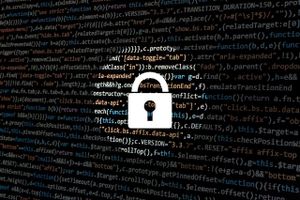According to the Association of Certified Fraud Examiners, organizations report an annual revenue loss of 5% due to fraud.
In an era defined by digital transformation, where technology permeates every aspect of our lives, the convenience we've gained has come at a cost - the constant looming threat of cyber-attacks. The digital realm, from social media platforms to fintech giants, stores vast volumes of sensitive data, making it an irresistible target for cybercriminals.
Despite robust security measures, we've witnessed significant breaches like the 2018 Indane Aadhaar data leak and the 2017 Equifax incident. These incidents serve as stark reminders of the relentless evolution of cyber threats.
The expansion of interconnected systems, the widespread adoption of cloud computing, and the proliferation of the Internet of Things (IoT) have introduced new avenues of vulnerability for cyberattacks. According to the Association of Certified Fraud Examiners, organizations report an annual revenue loss of 5% due to fraud, underlining the pervasive nature of cyber threats across sectors.
The Fintech Challenge: Unique Cybersecurity Hurdles
While cyber threats affect organizations across industries, fintech companies face unique cybersecurity challenges due to the sensitivity of the data they handle. Safeguarding customer information and securing financial operations are non-negotiable. To achieve this, fintech organizations must prioritize robust cybersecurity measures that adapt to the ever-changing threat landscape.
- Secure Banking Platforms: The BFSI sector has been swift in embracing secure banking platforms, incorporating encryption, multi-factor authentication, and secure communication channels. These measures not only enhance customer access but also shield sensitive financial data from prying eyes.
- Fraud Detection and Prevention: AI-powered fraud detection systems have gained prominence, scrutinizing real-time transactional data to unveil anomalous patterns. Machine learning algorithms excel at identifying potential fraud, thus curtailing financial losses and fortifying customer security.
- Data Protection and Compliance: In today's regulatory environment, adherence to stringent data privacy regulations like GDPR and PCI DSS is non-negotiable. Robust data protection measures and strict compliance practices not only nurture customer trust but also prevent regulatory penalties.
- Adaptive Strategies in a Rapidly Evolving Landscape: As cyber threats continue to evolve, organizations must adopt adaptive strategies that encompass both technical and non-technical measures:
- Proactive Threat Intelligence: The first line of defense involves constant digital surveillance, understanding emerging threats, and identifying potential vulnerabilities within the organizational framework. Robust threat intelligence programs are instrumental in staying ahead of potential dangers, enabling enhanced readiness and responsiveness to potential cyberattacks.
- Comprehensive Data Security and Protection: Data protection necessitates multifaceted strategies. Robust authorization and authentication management, extensive data backup strategies, and disaster recovery plans ensure data resilience, even in the face of breaches or system failures.
- Blockchain for Enhanced Security: The decentralized and immutable nature of blockchain technology strengthens security and transparency. Its applications extend to secure identity management, tamper-proof data storage, and verified transaction validation. Organizations can harness blockchain's potential to fortify their cybersecurity defenses.
- Embracing Zero Trust Architecture: In an era dominated by cloud computing, Zero Trust Architecture revolutionizes traditional trust paradigms. By presuming hostility by default and mandating context-based trust assessments for users and applications, it enables enhanced security across various network environments without necessitating architectural overhauls.
- Leveraging Automation and Orchestration Tools: The rise of AI-powered security automation streamlines mundane tasks such as patch management and incident response. Machine learning algorithms infuse efficiency, liberating human resources for more strategic tasks.
- AI-driven Penetration Testing and Vulnerability Management: AI and ML are revolutionizing penetration testing and vulnerability management. These technologies automate unauthorized access simulations and vulnerability assessments, expediting processes and augmenting precision.
- Elevating Employee Awareness and Training: Human vigilance remains pivotal. Cybersecurity awareness training empowers employees to strengthen the human dimension of security. For remote workers, vigilance against phishing, social engineering, weak passwords, and compromised networks is imperative.
Government Initiatives and Technological Evolution
The government also plays a crucial role in adapting to the ever-changing needs of cybersecurity. In August 2023, the Indian Parliament passed the Digital Personal Data Protection Bill, 2023, which outlines the handling of personal data breaches and legitimate uses of data processing. Government initiatives, combined with the efforts of organizations, are instrumental in fortifying the cybersecurity landscape.
AI and ML: Spearheading Orchestrated Cybersecurity Practices

In the near future, AI and ML are expected to spearhead orchestrated cybersecurity practices, shaping strategies with automated expertise. Autonomous security systems guided by AI and ML's decision-making capabilities will stand as cornerstones of cybersecurity. These technologies will refine Security Operations Centers (SOCs), automate tasks, analyze diverse data sources, and provide real-time threat insights.
Technological evolution offers both convenience and advanced threats. However, with updated tools and strategies consistently applied, organizations can effectively navigate the ever-changing cyber threat landscape. As we move forward, the symphony of cybersecurity will continue to adapt, ensuring a safer digital future for all.
A Unified Approach to Cybersecurity
The ever-changing cyber threat landscape demands a unified and adaptive approach to cybersecurity. Organizations, especially those in fintech, must prioritize robust cybersecurity measures tailored to their unique challenges. Proactive threat intelligence, comprehensive data security, and emerging technologies like blockchain and AI are essential components of a robust cybersecurity strategy.
As government regulations evolve and technological advancements continue, the role of AI and ML in cybersecurity will become increasingly vital. These technologies will not only enhance threat detection and response but also empower organizations to stay one step ahead of cybercriminals.
In this dynamic landscape, the balance between convenience and security remains a constant challenge. However, by embracing adaptive strategies and staying vigilant, organizations can navigate the evolving cyber threat landscape and ensure a secure digital future.









